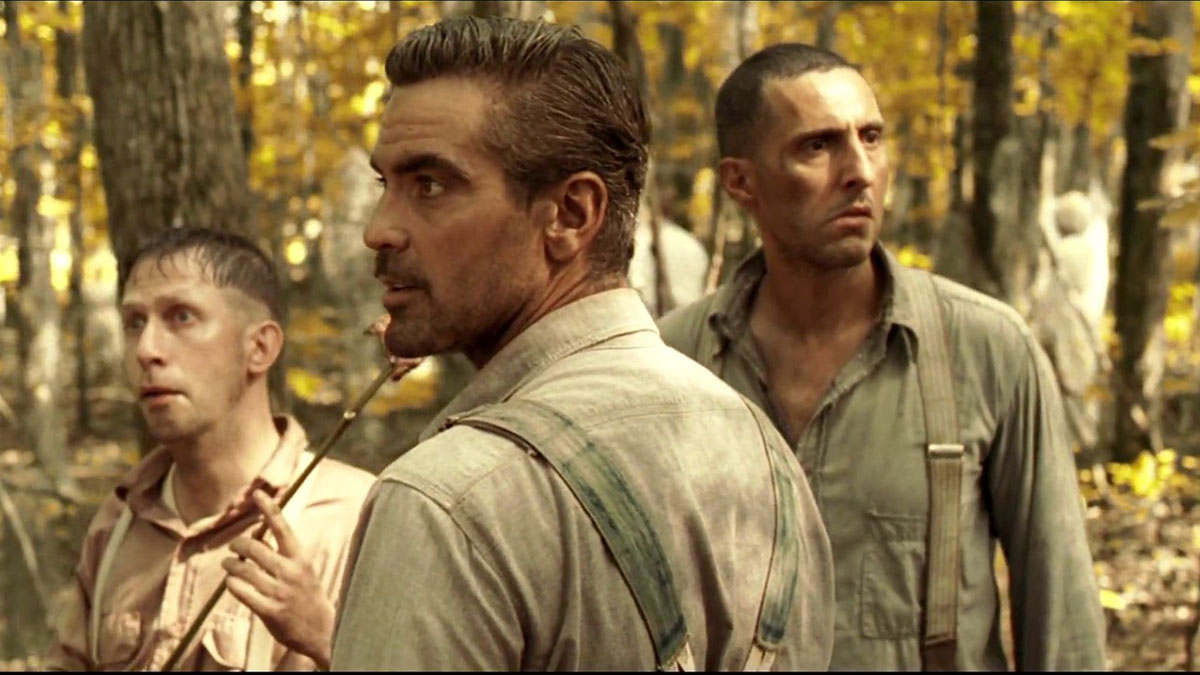A Chromatic Odyssey: The Symbolism of Color in O Brother, Where Art Thou?
If you ever find yourself lost in the back roads of Mississippi, just remember: the road may be yellow, but that doesn’t mean you’ll stumble upon treasure. Instead, you may encounter a trio of bumbling convicts on a quest for freedom—much like the characters in the Coen Brothers’ O Brother, Where Art Thou? Loosely inspired by Homer’s The Odyssey, this film is an exploration of American folklore, where color serves as powerful narrative, enhancing the period feel and enriching the characters’ transformative journeys.
The Power of Sepia: Nostalgia and Authenticity

At the heart of the film’s visual style is its sepia tone, which evokes nostalgia for a bygone era. This muted palette immerses viewers in the 1930s South, grounding the story in the stark realities of the Great Depression. The earthy browns and faded yellows mirror the struggles of our protagonists—Ulysses Everett McGill (George Clooney), Pete (John Turturro), and Delmar (Tim Blake Nelson)—as they embark on their own odyssey, navigating a world filled with obstacles and temptations. The sepia tones not only enhance the film’s authenticity but also create a sense of timelessness, suggesting that themes of struggle and redemption resonate across generations, just as they do in Homer’s epic.
Color as Symbolism: Temptation and Transformation
But hold onto your hats! Amidst this dusty backdrop, vibrant yellows burst forth, symbolizing hope and transformation. A prime example is the encounter with the sirens, whose dazzling yellow dresses stand in stark contrast to the sepia tones. This vivid splash of color represents temptation and the allure of dreams. The sirens embody desire, reminding us that sometimes what glitters can lead to chaos. To experience the haunting beauty of the sirens’ song, check out this clip:
As the characters journey through the South, their relationship with color evolves. Each vibrant hue signifies growth and change. The lush greens of the fields they traverse represent renewal, contrasting sharply with their grim reality. This is a nod to the hope that drives their odyssey, much like Ulysses’ quest for home and identity in the ancient tale.
Let’s not forget the blues! Often associated with sorrow and loss, the blue tones in certain scenes highlight Ulysses’ longing for his family and the life he left behind. This interplay of colors invites us to engage with the characters’ internal struggles, evoking a sense of empathy—or at least a chuckle as we recognize our own relationship woes.

Emotional Landscapes: The Role of Digital Color Grading
The Coen Brothers’ artistry extends beyond traditional filming techniques. With the help of digital color grading, they amplify these emotional landscapes, transforming everyday scenes into visually stunning experiences. This technique allows for control over hues, enhancing storytelling while guiding viewers through the characters’ ups and downs. For a deeper look into the film making process, check out this behind-the-scenes clip:
Next time you watch O Brother, Where Art Thou?, pay close attention to the colors dancing across the screen. The Coens have masterfully woven color into the fabric of the film, turning it into a profound narrative device. Whether sepia-toned or vibrantly hued, each color invites you to reflect on your own journey, illuminating the path ahead.
Curious to dive deeper into the world of color in cinema? Join the conversation by joinimng our newsletter below! After all, while we may not all be on a quest for treasure, we can certainly appreciate the colorful journey of life.
Subscribe Now
Get the latest cinema industry insights straight to your inbox
